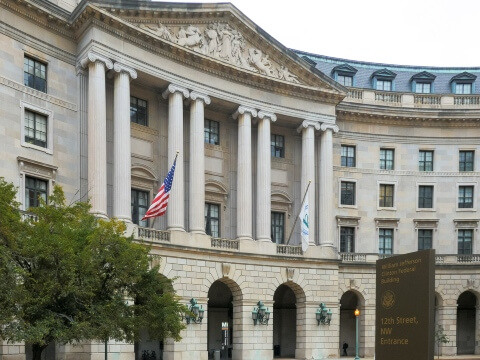EPA Facing More Litigation on Legacy Asbestos
Legislation & LitigationWritten by Tim Povtak | Edited By Walter Pacheco

The Asbestos Disease Awareness Organization delivered on an earlier notice of intent to sue by filing an official complaint against the U.S. Environmental Protection Agency over its ongoing risk evaluation of asbestos.
ADAO, a leading nonprofit aimed at preventing asbestos exposure, was joined by five other organizations and several public health experts in asking the court to set a deadline for the EPA to complete its work. The lawsuit was filed May 18 in the U.S. Northern District of California Court in San Francisco. The notice of intent to sue was delivered in January.
Thoracic surgeon Dr. Raja Flores of Mount Sinai Hospital, a New York City mayoral candidate, is among the health experts listed as plaintiffs. Michael Regan, EPA administrator, is the defendant.
Exposure to asbestos, a naturally occurring mineral once used ubiquitously in construction, can cause a number of serious health issues, including mesothelioma cancer.
The lawsuit contends that the EPA has failed to adequately evaluate asbestos as required by the amended Toxic Substances Control Act.
“One thing for sure, the U.S. can’t manage the existing risk of legacy asbestos, nor imports and use,” Linda Reinstein, ADAO president and co-founder, told The Mesothelioma Center at Asbsestos.com. “Americans can’t wait any longer. Our country has been remiss in protecting Americans from harm.”
Asbestos Final Risk Evaluation Found Lacking
The lawsuit was sparked by the EPA’s Final Risk Evaluation for Asbestos, which was partially released in December 2020. Although the EPA was originally expected to complete the evaluation in 2020, it only produced Part 1.
In the December release, the EPA said a Part 2 preliminary evaluation would become public in mid-2021 and would address the issue of legacy asbestos and associated disposal of the product. The original risk evaluation, which began in 2016, was not intended to include legacy asbestos.
ADAO and fellow plaintiffs criticized the December risk evaluation, saying it badly underestimated the dangers of asbestos and failed to address legacy asbestos. They then filed a petition for review.
According to the lawsuit, the EPA has not identified the scope of its Part 2 evaluation, nor established a deadline for completing it.
“Because this is pending litigation, EPA has no additional information to share,” an EPA spokesperson said in an email to the Reuters news agency.
Legacy Asbestos Remains in Older Construction
The EPA’s Part 1 evaluation found 16 conditions of asbestos use that presented unreasonable risk to human health through either occupational exposures or consumer uses.
Among the unreasonable risks were the use of asbestos diaphragms in the chloralkali industry, sheet gaskets in chemical production, brake blocks in the oil industry and friction products.
One of the biggest threats to the general public, however, is asbestos in older homes and commercial buildings – legacy asbestos – found most everywhere. Legacy asbestos was added to the Toxic Substances Control Act in 2019 after a U.S. Circuit Court of Appeals ruled the EPA must include it, an order sparked by another lawsuit from ADAO and others.
Earlier this month, the EPA announced it was holding two public environmental justice consultation meetings to discuss risk management actions to be taken based upon its Part 1 findings. The two webinars will be held June 1 and June 9.
The consultation period, which will include small businesses and state and local governments, will be open until Aug. 13 to discuss potential law changes.
Ultimate Goal Is a Legislative Ban
Asbestos, which is already heavily regulated, has not been mined in the U.S. since 2002. Almost 300 metric tons of raw asbestos – a fraction of the record high of 803,000 metric tons imported in 1973 – was imported in 2020. The chloralkali industry consumes all of the imported raw asbestos today.
The list of asbestos imports still includes a number of products, including gaskets, friction products, aftermarket automotive brake pads and brake blocks.
For almost two decades, ADAO has been involved in education and advocacy efforts regarding asbestos. In recent years, though, it also has turned toward legal and legislative initiatives, mostly directed at the EPA.
“Our country has been remiss in evaluating the magnitude of this risk,” Reinstein said. “The EPA’s lack of action left us with no choice but to file suit.”
ADAO’s ultimate goal has been legislation to spark a complete ban of asbestos in America. Numerous legislative efforts throughout the years have failed in Congress.
Despite broad support, the Alan Reinstein Ban Asbestos Now Act of 2020 – H.R. 1603 – failed to advance through the U.S. House of Representatives in October. The bill was named after Reinstein’s husband, who died of mesothelioma in 2006.







